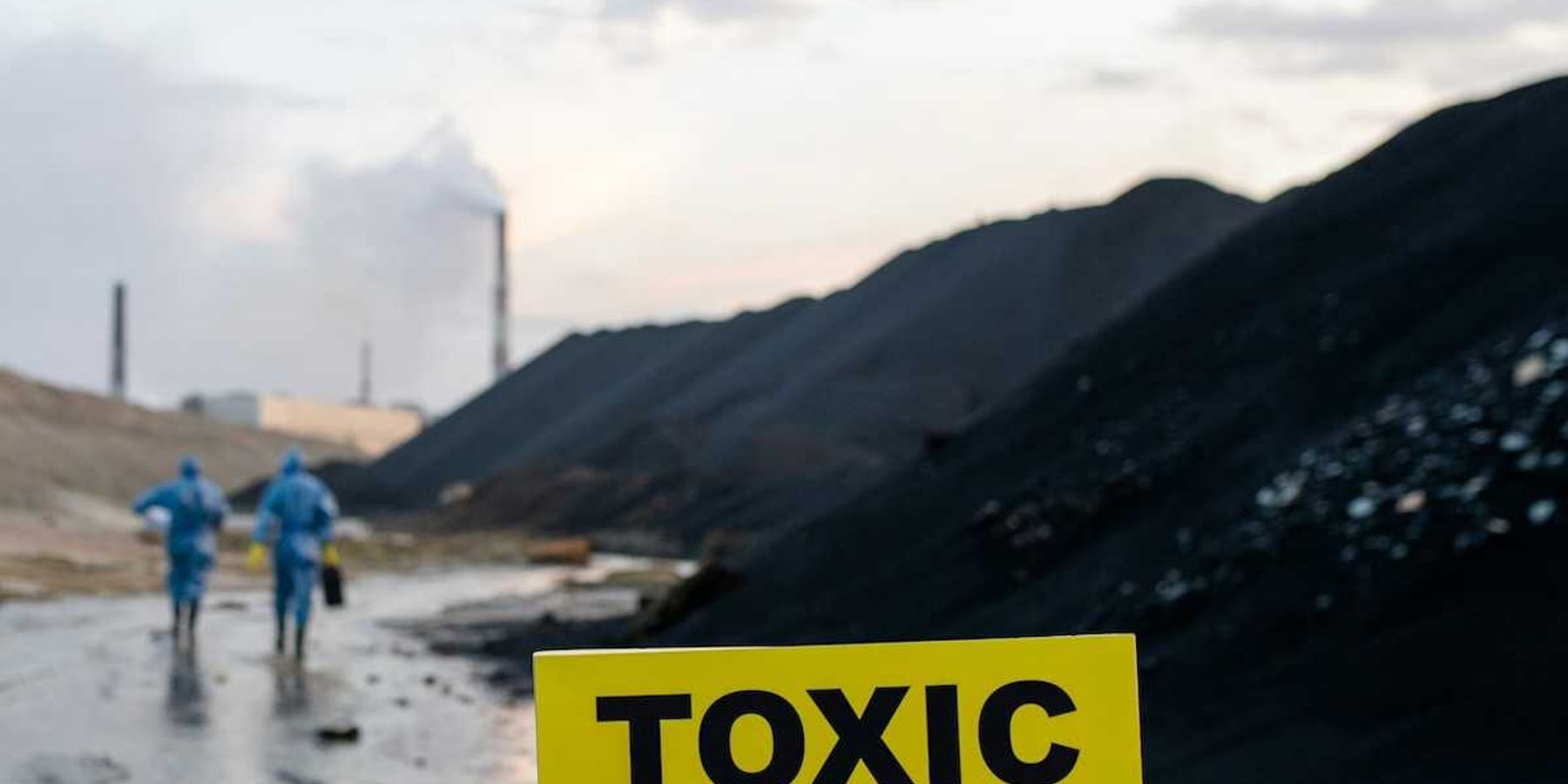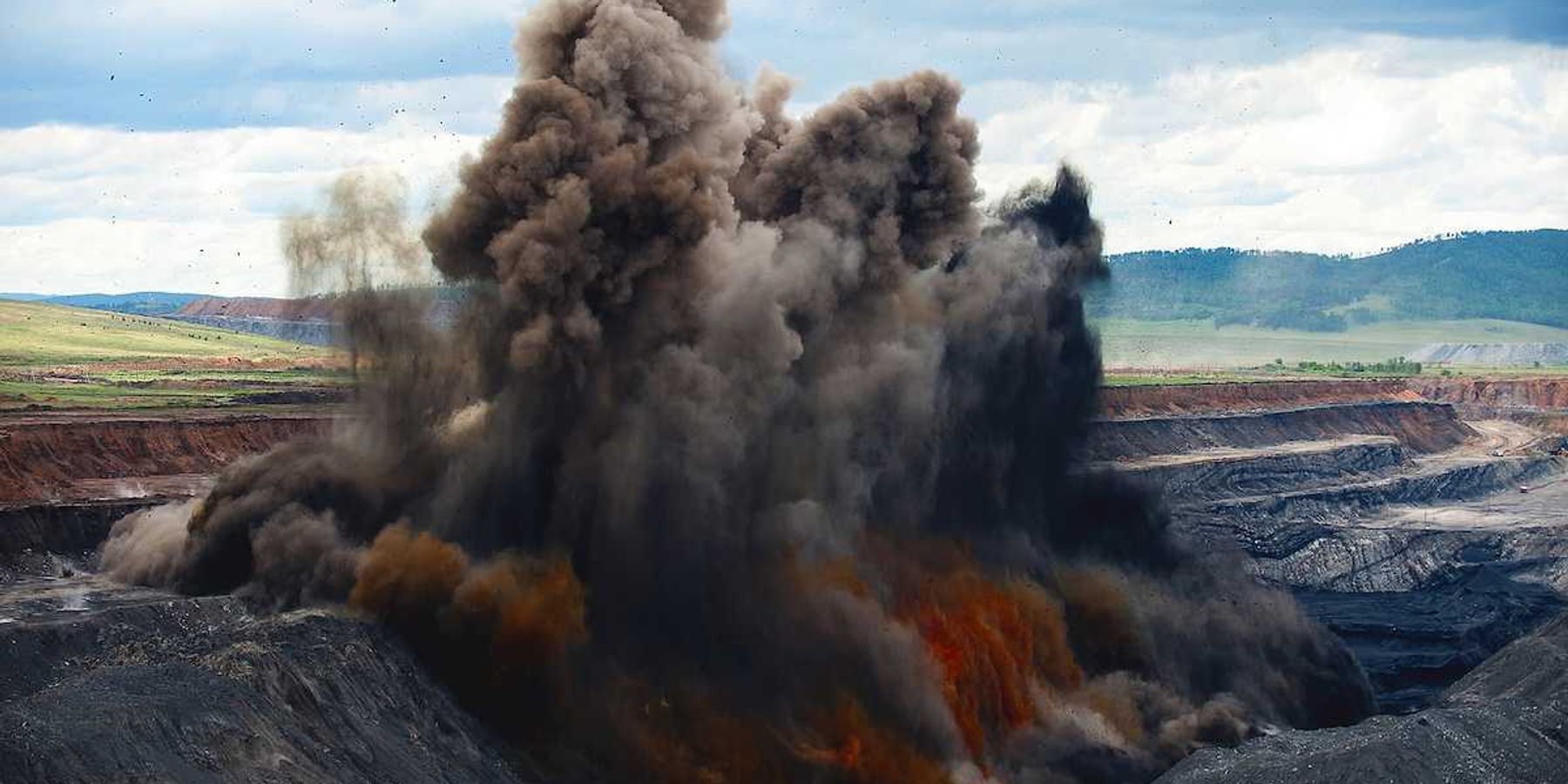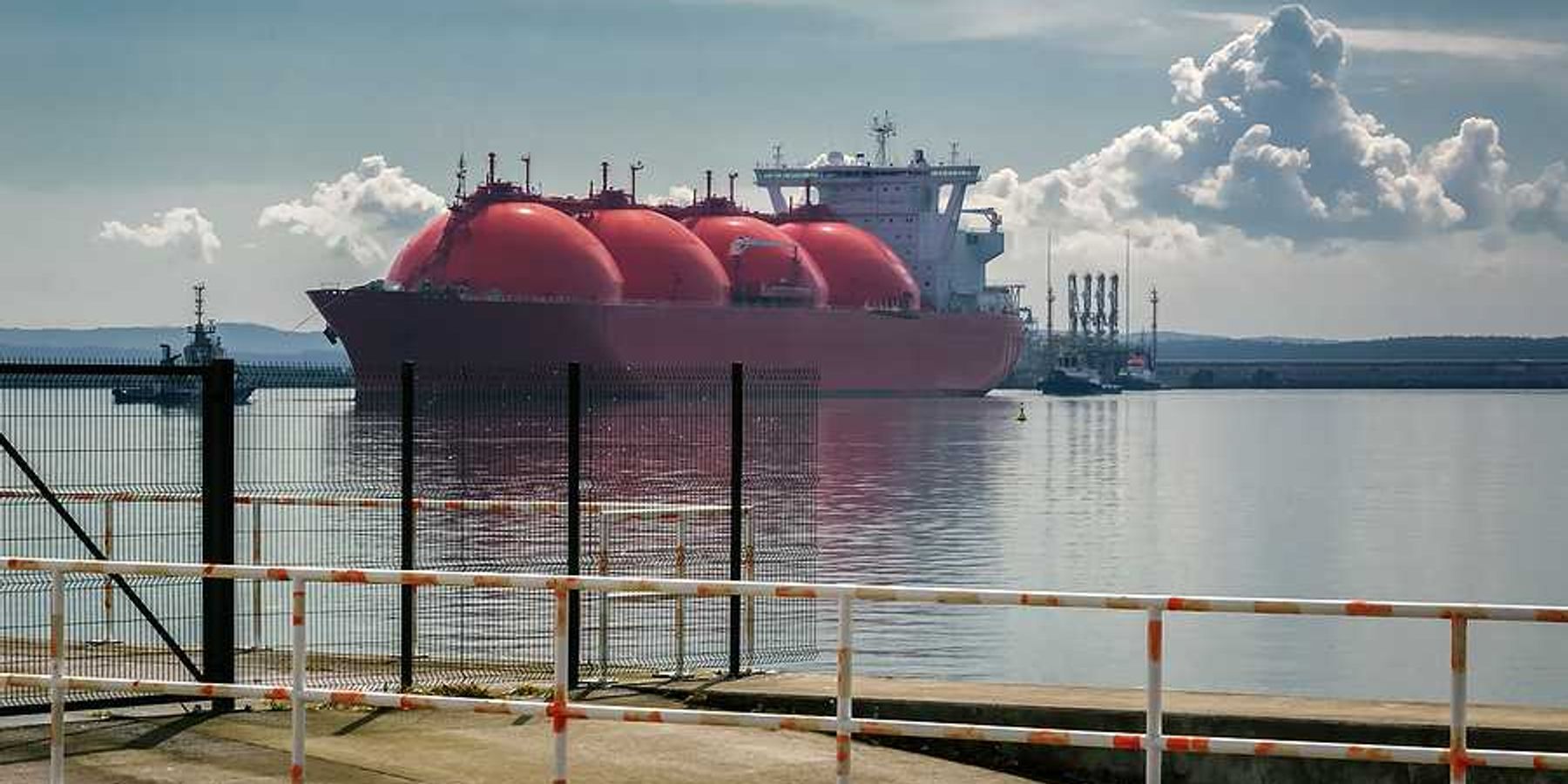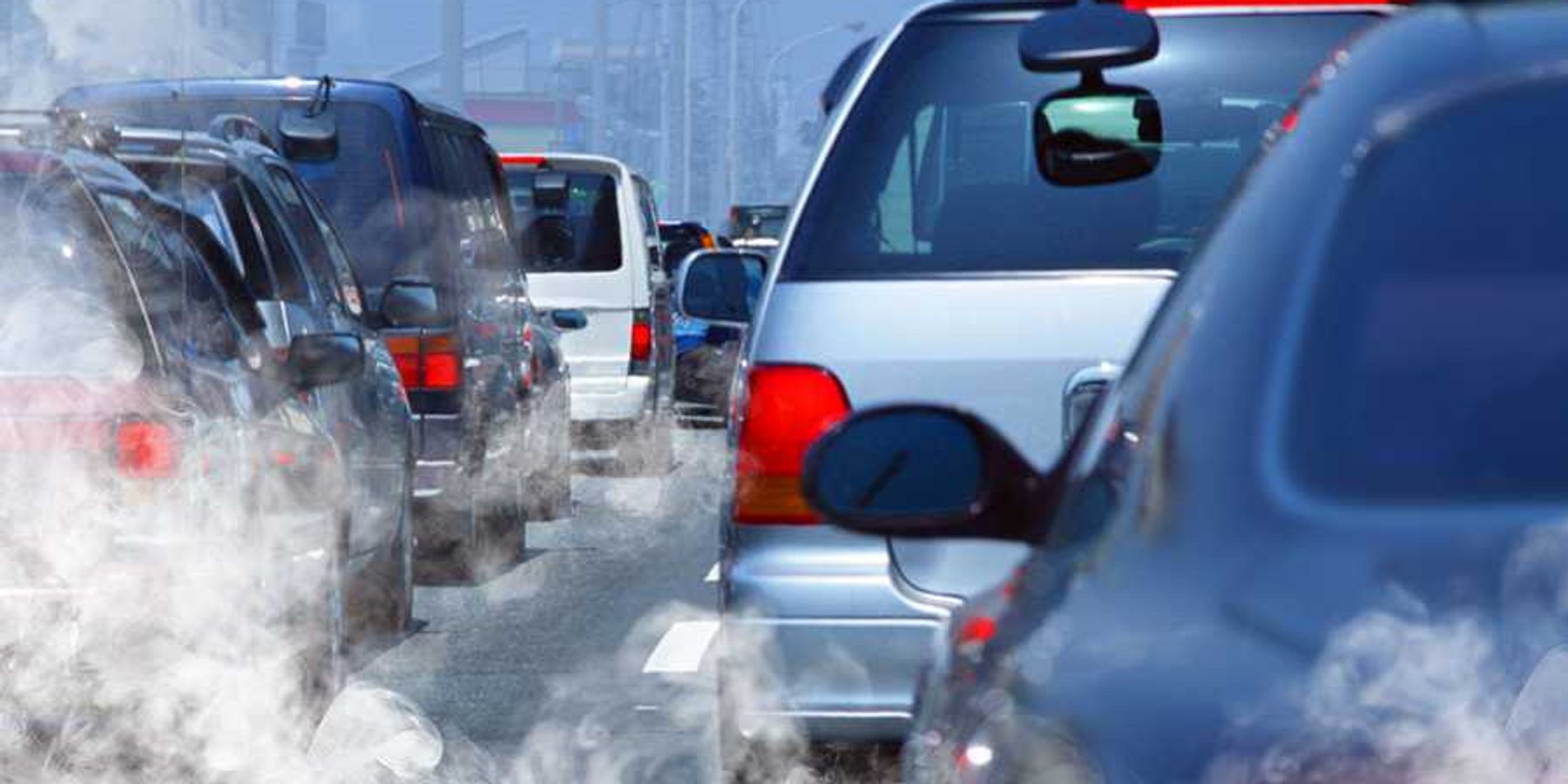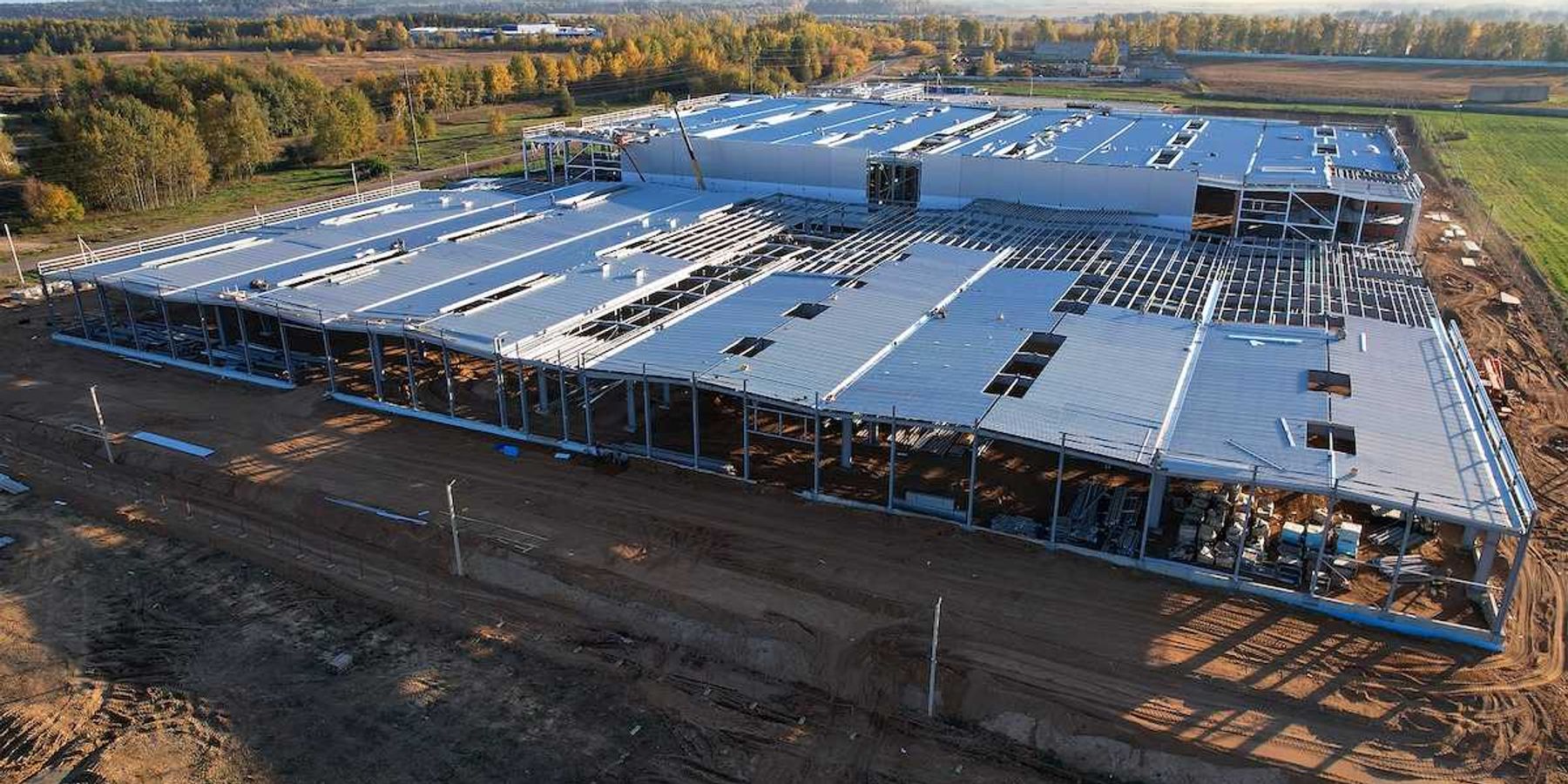
LNG production comes with a price, Gulf Coast communities warn
US takes the global lead on liquid natural gas production and export, as economic promises and environmental worries collide.
CAMERON PARISH, La.—In southwest Louisiana, amidst natural disasters and industrial expansion, everyone’s lost something — boats, income, family, homes — Leo Dyson admits.
“The house is nothing,” Dyson, a retired commercial fisherman, told Environmental Health News (EHN) of he and his wife’s property lost to Hurricane Rita’s estimated 18-feet of storm surge in 2005. Nearly everyone in Cameron Parish, the town about three hours west of New Orleans where Dyson and his extended family have lived for generations, lost homes in the storm. “It’s your family and the town and your kid’s friends. How do you put a price on that?”
The town’s population dipped from roughly 10,000 to 5,000 in the last two decades. That exodus is exacerbated by not just hurricanes, but expansion of oil and gas refining — most recently, the building of infrastructure for liquified natural gas, or LNG.
LNG is natural gas cooled to liquid for easier storage or transport – it occupies 0.17% natural gas’ volume in its gaseous state. It’s used to generate electricity, or fueling stovetops and home heaters and in industrial processes like manufacturing fertilizer. Since Russia’s invasion of Ukraine in January 2022, LNG has seen a historic rise in global demand. The International Energy Agency, or EIA, estimates global ability to produce and export LNG will expand by 25% between 2022 and 2026, with the U.S. taking the lead.
Across the U.S., at least 30 new LNG terminal facilities have been constructed or proposed since 2016, according to the Oil and Gas Watch project. Roughly two-thirds of the facilities will be based near the industry-heavy Gulf Coast, where five LNG facilities are already operational and where at least 22 new facilities are under construction, approved or under regulatory review. The LNG industry’s buildout has become part of a dual force, alongside the effects of climate change regionally, that are wiping out the region’s historic commercial fishing industry, fishers say.
The expansion is an attempt at creating “good-paying jobs” in the historically low-income communities of Southwest Louisiana, as Cameron Parish congressman Clay Higgins — whose office didn’t return EHN’s request for comment — described in a letter lending his support for approval of Venture Global LNG’s pipeline from Texas’ Jasper County to the parish’s terminals. Louisiana agencies estimate its LNG industry has added roughly 18,000 jobs to the state economy, with a statewide impact of more than $4.4 billion.
However, LNG’s roll-out across the region also raises fears of environmental harm, due to its role in the disintegration of marshlands, and health risks. A study published in May in the journal Environmental Research: Health found that the pollutants LNG terminals emit during production contributed to 7,500 excess deaths, 410,000 asthma attacks, and 2,200 new cases of childhood asthma nationally in 2016. Louisiana was one of five states with the highest impacts. Volatile compounds like nitrogen oxide, sulfur dioxide, carbon monoxide and particulate matter are the main culprits the Environmental Integrity Project says.
There was a time when stocks near Cameron Parish’s docks were so bountiful, commercial fishers’ morning harvests would be complete and their checks cashed by noon, Dyson recalled. Slowly, but surely, though, their lifestyle became harder, as community docks were wiped away each hurricane season, and as seafood prices plummeted while fuel costs rose. Steadily, neighbors, friends, and family left town; now, with LNG’s arrival, more claim they will follow.
Standing on the side of one of Cameron Parish’s mostly empty streets on a summer afternoon earlier this year, Dyson recounted what powerful storms and LNG expansion have erased for their community’s families. Dyson would have never followed the local exodus if not for losing their family’s home, as well as his fishing boat, which was totaled during the same storm. Today, part of him still refuses to leave. “There’s just been too much taken away from people,” he said.
The race for LNG
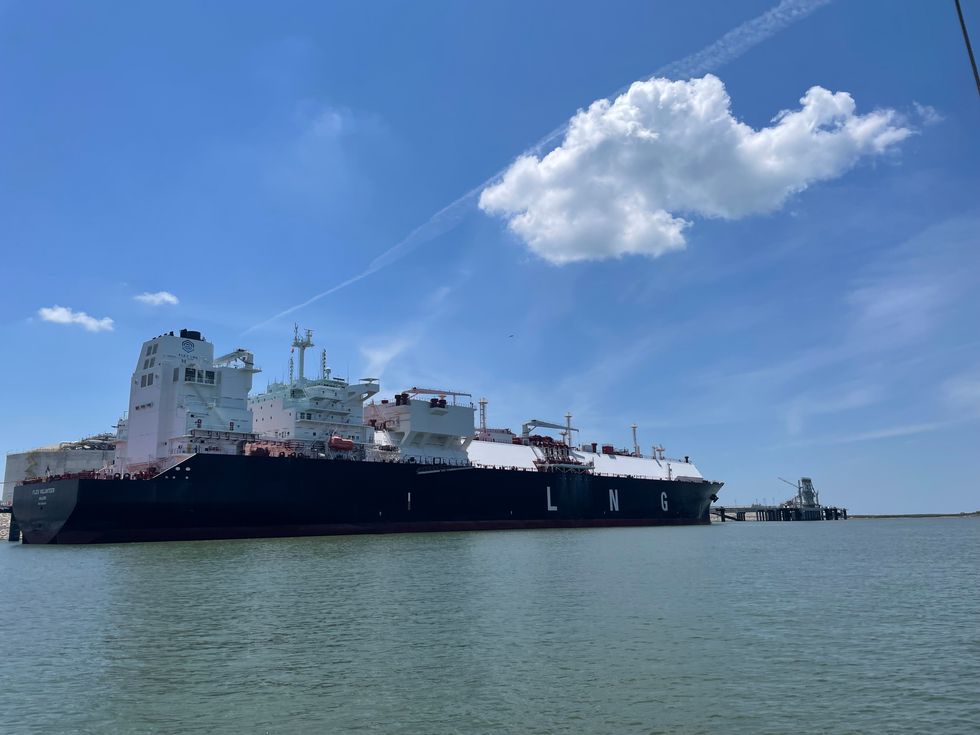
An LNG freight container docks at port in Cameron Parish. Two of Louisiana’s three operational LNG plants are based locally, with more in the planning or construction phases.
Credit: Xander Peters for Environmental Health News
The path leading LNG facilities and the petroleum industry to southwest Louisiana’s shores began in the 1980s, with the advent of hydraulic fracking technology. Through “fracking,” the U.S. oil and gas sector shifted from importer to exporter of fossil fuels . In 2006, the U.S. imported more than half of its oil every year. Within a decade, at the height of its fracking boom, the nation’s annual imports decreased to a quarter, while it became the world’s largest natural gas producer, the EIA reported. In 2016 — for the first time since 1957 — the U.S. sold more natural gas to other countries than it bought. The U.S. is now the world’s largest natural gas exporter, the EIA said.
Recent global pressures have accelerated LNG's domestic expansion. With Russia’s Ukraine invasion in early 2022, the Kremlin exited the global energy market. The U.S. promptly filled the gap in the European market, where Russia supplied roughly half of the continent’s needs, according to the International Energy Agency. This meant a 141% increase in LNG exports to Europe last year compared to 2021.
Energy economists describe not just Europe’s LNG needs, but emerging markets across Asia, as drivers in ongoing investment. Forecasts show natural gas is “very likely going to continue to have a very meaningful share of the overall energy mix, even in a carbon-constrained environment,” David Dismukes, an energy consultant and the former executive director of Louisiana State University’s Center for Energy Studies, told EHN. Nearly all of the U.S.-made LNG will be for export, Dismukes said.
“There’s just been too much taken away from people.” - Leo Dyson, retired commercial fisherman
As his fishing vessel motors by a large freight tanker with the letters “LNG” written on its side, 41-year-old Phillip Dyson — Leo Dyson’s nephew — leans up against the boat’s cabin. He shook his head disappointedly as he stared at the freighter next to him. He and other local fishers’ have claimed the volume of their catch dropped by as much as 90% this past shrimping season. At one point, commercial anglers estimate they brought home roughly 700,000 pounds annually.
When friends ask the younger Dyson why he won’t give up, he simply says, “This is home”
“Sometimes I’m like, ‘what am I fighting for?’ You get burned out,” Dyson said.
“But I’ve never worked another job a day in my life,” Dyson continued. “This is all I ever did.”
As the U.S. increases LNG exports, the Federal Energy Regulatory Commissioner, or FERC approved the first large-scale LNG projects in two years. Two new LNG terminals in Louisiana’s Plaquemines Parish and in Texas’ Golden Pass are expected to come online as soon as 2024, and a third export terminal, Commonwealth LNG, expects to start production in 2026 near Cameron Parish. Three more facilities — Lake Charles LNG, Driftwood LNG and Magnolia LNG — have been approved and will break ground in the area, while only one facility is under review. The Department of Energy has yet to deny a proposed LNG export, according to attorneys at the National Resources Defense Council’s Climate and Energy Program. In calling for “revised approach,” the NRDC attorneys cited how the federal agency denied a request in July to establish comprehensive LNG export guidelines or to update its current guidelines, which were set in 1984.
At an LNG and gas summit last year, Jason French,an LNG industry consultant and the executive director of McNeese State University’s LNG Center for Excellence, cited how each LNG facility built in southwest Louisiana has created between 6,000 and 10,000 temporary jobs and 300 to 500 permanent jobs, among other opportunities. (McNeese State University’s LNG Center for Excellence spokespeople did not return EHN’s request for additional comment.)
The average annual income in Cameron Parish, where most of the new facilities are proposed, is about $32,000 — 15% less than the national average — according to recent U.S. Census data.
“I’d say this is probably the last generation of shrimpers,” Leo Dyson said of his nephew’s generation of commercial fishers. Eventually, he fears, “they’ll have to do something else.”
Environmental health risks of LNG
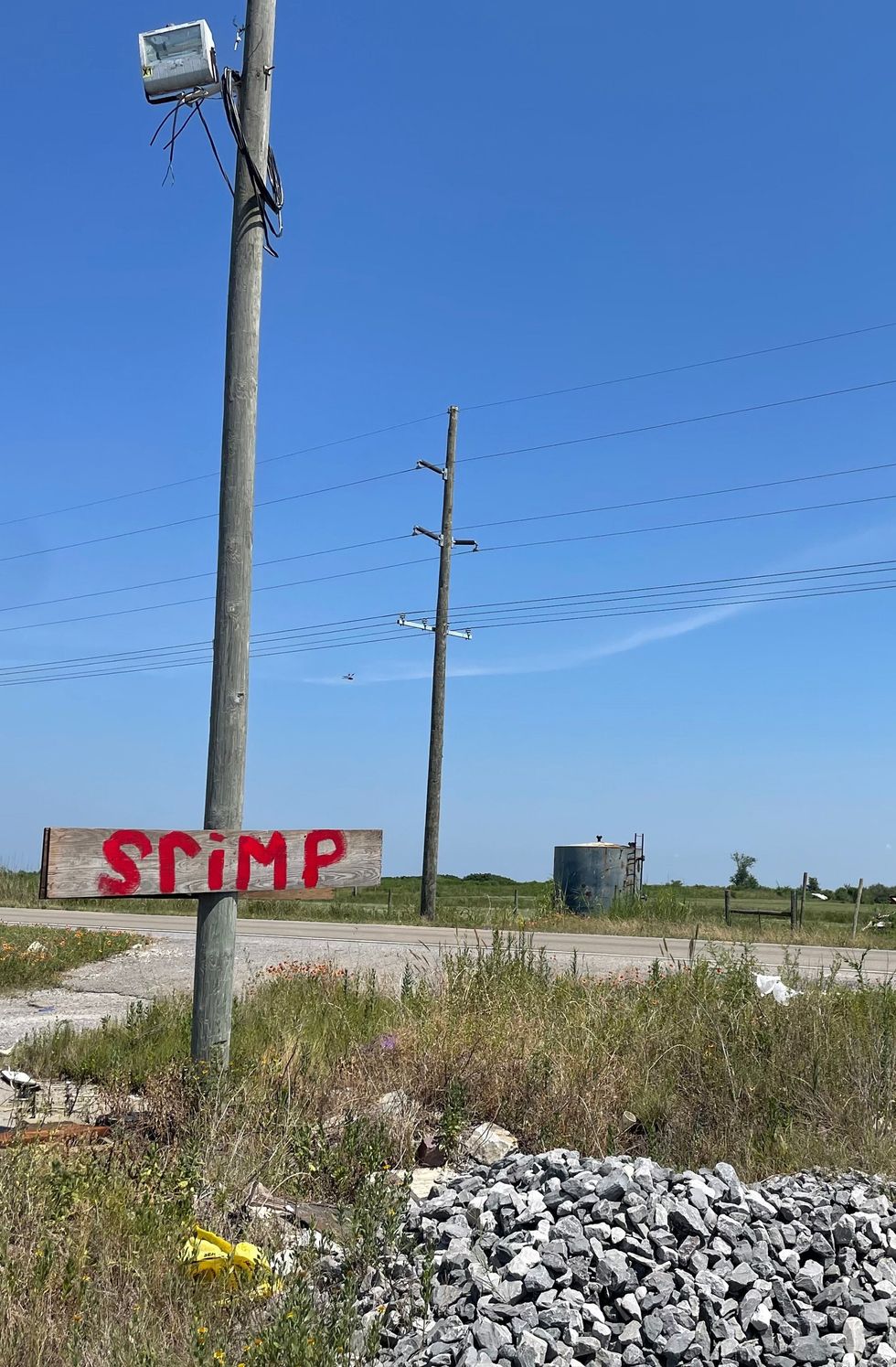
A sign advertising shrimp sales near a fishing dock in Cameron Parish, Louisiana. The region’s commercial fishers’ claim LNG industry expansion impacts the quality of local stocks.
Credit: Xander Peters for Environmental Health News

“A fisherman's life is a hard life. One day you have more money than you need and a month later you might not have any, and you've got children that you still got to provide for.”
Credit: Courtney O'Banion for the Louisiana Bucket Brigade
The Environmental Integrity Project found that LNG export terminals emit chemicals like carbon monoxide – potentially deadly – and sulfur dioxide, which the Mayo Clinic describes as potentially deadly, and sulfur dioxide, of which the American Lung Association says long-term exposure can lead to heart disease, cancer, and damage to internal or female reproductive organs.
It’s likely LNG infrastructure will contribute to the Louisiana coastline’s crisis. A March 2023 study linked the crisis to the constant engineering of the Mississippi River’s path, which constricts sediment delivery through the building of artificial levees. The oil and gas companies’ dredging of canals for navigation and transportation, as well as building new structures and infrastructure for flood control, has contributed to the crisis, the authors noted. Like past infrastructure projects, LNG export terminals often require dredging of passage to transport the product.
The fossil-fuel terminals also contribute to the climate crisis, which has already increased the intensity of extreme storms in the region – just two years ago, Hurricane Laura made history as the most powerful storm to hit Louisiana since 1856, costing $19 billion in damages; 47 deaths and the nation’s largest population exodus that year, according to local U.S. Postal Service data.
For the most part, LNG is made up of methane — a greenhouse gas that’s more than 80 times more potent than carbon dioxide in the atmosphere. Among the 22 current LNG facility proposals, a report by the advocacy group the Sierra Club cited potential climate pollution output could be roughly equal to that of about 440 coal plants.
LNG infrastructure’s expansion has only added to the headache for locals, too. As they await a buyout on their property due to the company Venture Global’s Calcasieu Pass expansion plan, the Dardar family — who relocated to Cameron Parish to continue commercial fishing — fears for their health. Their children complain of headaches.
The facilities “like to flare at night, especially when it's cloudy,” releasing pollutants, Nicole Dardar, a commercial fisher, described to EHN of facilities’ use of flare stack devices that introduce volatile compounds, like sulfur dioxide, into the atmosphere. “You can clearly see it.”
The Environmental Integrity Project found that LNG export terminals emit chemicals like carbon monoxide –potentially deadly– and sulfur dioxide, which the Mayo Clinic describes as potentially deadly, and sulfur dioxide, of which the American Lung Association says long-term exposure can lead to heart disease, cancer, and damage to internal or female reproductive organs.
A January report by the advocacy group the Louisiana Bucket Brigade cited Venture Global’s Calcasieu Pass facility as one of two facilities in the region with “operational problems.” In particular, the Bucket Brigade’s researchers proved that the companies failed to report excess carbon emissions, as required under facilities’ state permit.
“There’s numerous deviations,” Shreyas Vasudevan, a campaign researcher with the Louisiana Bucket Brigade, told EHN, including at least 70 in the first half of 2022 and 63 in the second. In July, following the excess emissions violations, the LDEQ ordered Venture Global, which is based in Virginia, to better comply with regulatory standards set by state and federal agencies.
During flaring events, black soot is “clearly visible from the tip of the flame, which shouldn't be allowed,” Vasudevan added. But due to existing technology, “there isn't any reliable mechanism to identify when the flare is being used improperly and to then force any action due to that.”
It also includes natural gas’ composition; for the most part, LNG is made up of methane — a greenhouse gas that’s more than 80 times more potent than carbon dioxide in the atmosphere. Among the 22 current LNG facility proposals, a report by the advocacy group the Sierra Club cited potential climate pollution output could be roughly equal to that of about 440 coal plants.
The facilities “like to flare at night, especially when it's cloudy. You can clearly see it." - Nicole Dardar, a commercial fisher
Climate change’s consequences are already felt across the southwest Louisiana region. There was Hurricane Rita in 2005; later, hurricanes Ike and Isaac would leave their own scars. And, recently, hurricanes Laura and Delta struck the area nearly consecutively in 2020. Hurricane Laura made history as the most powerful storm to hit Louisiana since 1856; 18 feet of storm surge roared toward properties across Cameron Parish and nearby areas. Laura produced roughly $19 billion in damages; 47 died. In Lake Charles, the storms’ impact forced the nation’s largest population exodus that year, according to local U.S. Postal Service change-of-address data.
In July, following the excess emissions violations, the LDEQ ordered Venture Global, which is based in Virginia, to better comply with regulatory standards set by state and federal agencies.
LDEQ did not return EHN’s request for comment by press time.
“Sometimes it's flaring events, sometimes it's emission events,” Wilma Supra, an environmental scientist and former recipient of McArthur Foundation grant for her work in combating pollution in communities, told EHN. She added that when an LNG facility commits violations under their permit, rather than comply with state and federal regulations, companies ask for increases in permitted emissions.
For example, in March, Venture Global asked state regulators to increase its limits on nearly every air pollutant the facility releases. In June, the state Department of Environmental Quality issued the facility a compliance order. The order cited fines up to $32,500 for each day Venture Global’s facility violated state law.
A recent Reuters analysis of vessel data and gas prices estimated that between March 2022 and August 2023, the local Venture Global LNG facility sold more than $18 billion in LNG cargo.
Venture Global LNG did respond to EHN’s request for comment.
“It’s all export”
On that same warm June afternoon, as Dyson stood on Cameron Parish’s streets, he pointed to the block in front him. Their family’s house once stood there, before Rita forced them to relocate an hour away, to Lake Arthur. They never rebuilt. In their former yard, six dogs are buried. Blocks away from where their pets rest, Dyson’s parents are buried in a local cemetery, as is a brother, a sister, and his daughter. He makes the trip to his hometown to visit their graves often.
It was Rita’s impact in 2005 that was “the first major toll” locally, Dyson said.
But in 2020, “Laura just finished it,” he added, referring to the storm’s impact locally.
The storm ended Dyson’s fishing career, too, after Laura totaled his boat.
It’s “young man’s work,” Dyson said of how he’s unwilling to reenter the industry at 73 years old. “I was lucky I did it till I was 70.”
With commercial fishing no longer an option, Dyson landed a job as a diesel mechanic helping build a local LNG plant. It allowed for Dyson and his wife to return to Cameron Parish after Laura, albeit temporarily. At the time, the Dyson couple lived in a small camper trailer during the work week that they parked in an empty lot near their former home. Before Monday evenings would roll around, the Dyson couple would drive more than an hour to Cameron Parish, where they would stay until Friday evenings, when they watched the sun set over their hometown on their way back to Lake Arthur.
“It was probably the easiest job I ever did,” Dyson said of the time he spent helping build the facility. “A fisherman's life is a hard life. One day you have more money than you need and a month later you might not have any, and you've got children that you still got to provide for.”
The construction job would last for about two years, until he and others were laid off three days before the project’s completion. Dyson said he was unable to collect unemployment as a result.
Dyson, at times, grappled with what the facility would mean for Cameron Parish, as well as the nation and its domestic energy supply. He did as he watched subtle changes in the land around him. Marshland would give way for the future plant. As hunks of metal parts rose from Cameron Parish’s dirt, Dyson noticed how the birds he used to see nesting on the ground had disappeared.
He thought industrial expansion would serve the community in its time of need.
But he’s changed his mind since then.
At first, “when I was building this, I said, ‘well, the country needs energy. Fine, good enough. I'm gonna help build this thing,’” Dyson said, pointing to an LNG facility on the horizon. “It's all export.”
Read Part 2: Amid LNG’s Gulf Coast expansion, community hopes to stand as a wall in its way
Some funding for this reporting was also provided by the Wake Forest University Environmental and Epistemic Justice Initiative.


